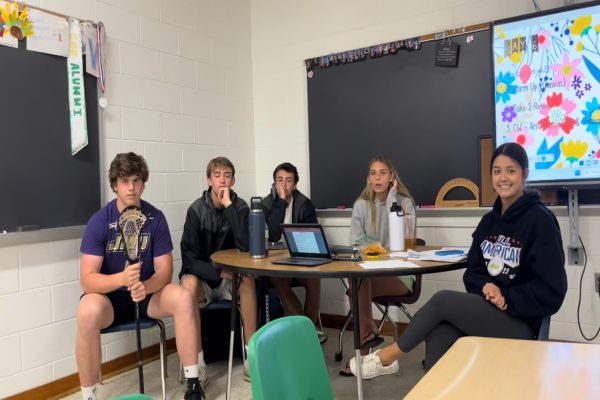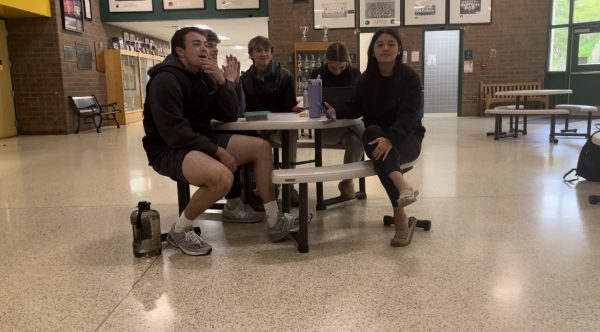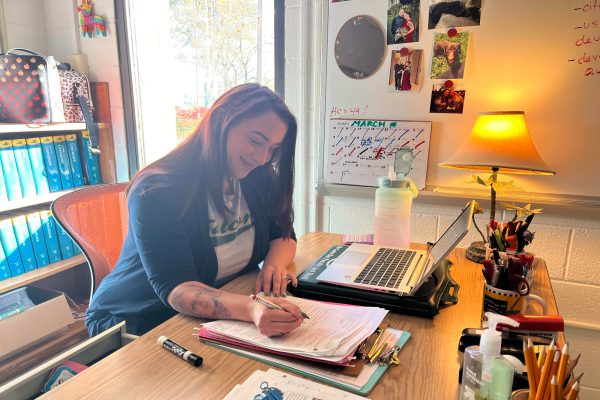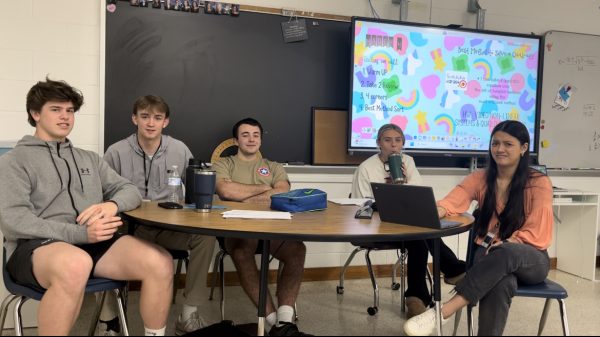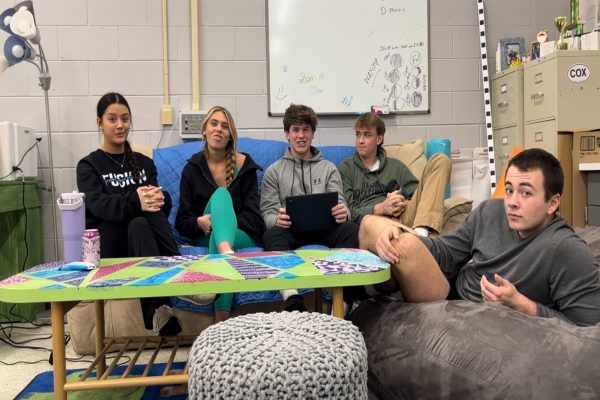Training room traffic
Overflow from the locker room spills down the girl’s locker room hallway as athletes wait to receive treatment from the school’s two trainers, Brian Wright and Kellie Adams.
Junior Angie Solomon taps her toes and twiddles her thumbs, waiting as countless players are treated. She watches the clock tick closer to practice time. The harried trainers move from person to person at an astounding rate. Still, Solomon is going to be late for practice.
Trainer Wright attended George Mason University to obtain his undergraduate degree in Science and Athletic training, as well as a degree in Health Promotion. Trainer Adams obtained her degree from Bridgewater College in Science and Athletic training.
Working side by side five days a week, Wright and Adams share the work load. Wright and Adams arrive each day at 1:00 p.m. and stays until all school practices and games end.
Countless athletes go into the training room every day to be ‘taped,’ consult with the trainers, or receive physical therapy before their respective practices.
“During spring and fall seasons, we have about thirty to thirty-five athletes are in the training room at once. All of them need to receive treatment in the short window before their respective practices,” Wright said.
With the influx of injuries and lack of time, the two athletic trainers must strategize to develop the most efficient way to get all athletes to practice on time.
“We have to prioritize the injuries, starting with the athletes who have a game. Besides that, it is a first come, first serve basis for the most part,” Adams said.
But, even with the implementation of rehabilitative strategies, it still takes time to give the best care.
According to Wright, treatment of all the athletes can take from twenty minutes to almost two hours, depending on the number of people and the types of injuries.
Thus, athletes who are receiving treatment are frequently late to practice, despite the trainers best efforts due to the lack of time.
“I have to run to the training room after my fourth block class. Otherwise, my ankle won’t be taped before practice and I miss time on the court,” Solomon said.
The trainers offer solutions to potentially solve this problem.
“If practice started later, we would have more time to reach all of the athletes before their practice begins. Or, another trainer could be hired to assist with the workload,” Wright said.
Senior athletes with an off block have the ability to visit the training room before school ends at 2:10 p.m. And, if seniors received treatment before this time, it is possible that the traffic going through the training room would be less hectic and perhaps more athletes would arrive at practice on time.
“I am here at 1 p.m. everyday, but it is rare for student athletes to come in before the end of the school day. I can only do so much to get athletes back to practice on time; students need to take responsibility and make the process easier. They need to help me so I can help them,” Wright said.

